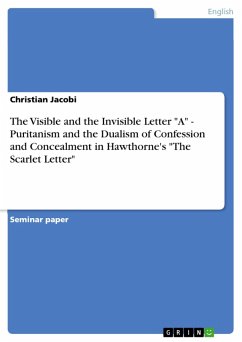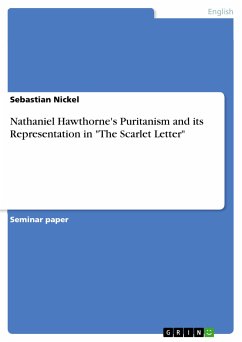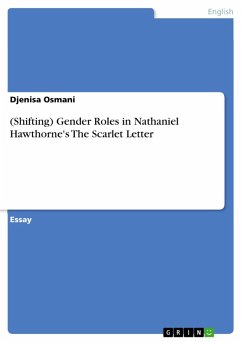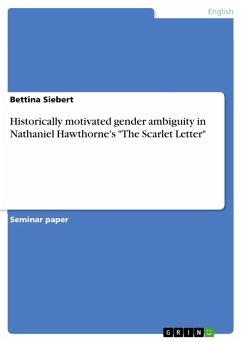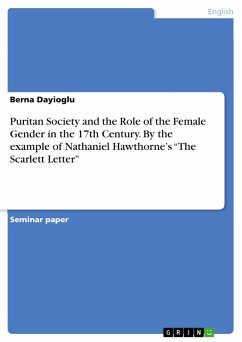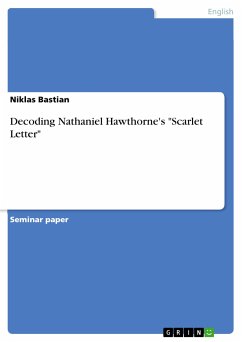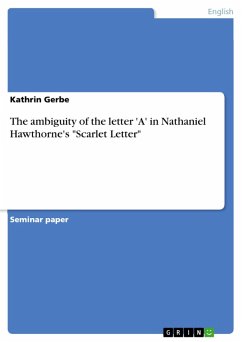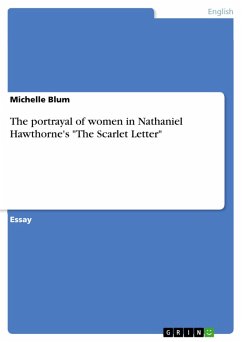Seminar paper from the year 2001 in the subject American Studies - Literature, grade: 1.5, University of Freiburg (English Department), language: English, abstract: Since its publication in 1850, Hawthorne's masterpiece romance The Scarlet Letter has been hailed by average readers and literary critics alike as one of the finest pieces of literature ever to have come out of the pen of an American writer. Not only regarded as "Hawthorne's most widely read and admired novel"3, The Scarlet Letter has also given numerous generations of critics bountiful opportunity for in-depth analysis of the novel's plot, characters, and meaning. A fair amount of scholarly attention has, for instance, been devoted to Hawthorne's "imposing splendor of portraiture"4. In the case of The Scarlet Letter, this has been evidenced by critics¿ particular interest in Hawthorne's portrayal of two of the novel's central characters: the Boston townswoman Hester Prynne and the pastor Arthur Dimmesdale. Against the backdrop of mid-17th century Puritan society in the newly founded American colonies, Hawthorne describes how these two characters¿ lives are, each in its very own way, dramatically changed by one moment of adulterous passion. It is the aim of the present paper to deliver a careful analysis of Hester and Arthur at the center of which shall be the difficult social and psychological circumstances the two characters encounter in the wake of their adultery. It will equally be shown that Hester and Arthur embrace different strategies in dealing with their situation. A plo t analysis reveals a clear dilemma and duality of a confession versus concealment theme which impacts greatly on the two characters and their behavior. Having been forced to confess to adultery charges, Hester manages to reshape her life by confronting pre sent demands while also hoping for future opportunities. By contrast, Arthur is tormented and obsessed by his moment of moral weakness in the past, wavering between reve - lation and dissimulation of his deed as he doubletalks his way through the novel's plo t. The first chapter of this study intends to establish a framework for the ensuing character analysis. Its aim will be to portray Puritan society as shown in Hawthorne's work, so that Hester's and Arthur's situation in the novel's plot will become clear. An interpretation of the two characters will follow in chapter two. First, Hester's behavior and the role she plays in the novel shall be analyzed under the aforementioned confession theme. [...] 3 Waggoner, p. 118. 4 Ripley, p. 26.
Dieser Download kann aus rechtlichen Gründen nur mit Rechnungsadresse in A, B, BG, CY, CZ, D, DK, EW, E, FIN, F, GR, HR, H, IRL, I, LT, L, LR, M, NL, PL, P, R, S, SLO, SK ausgeliefert werden.

